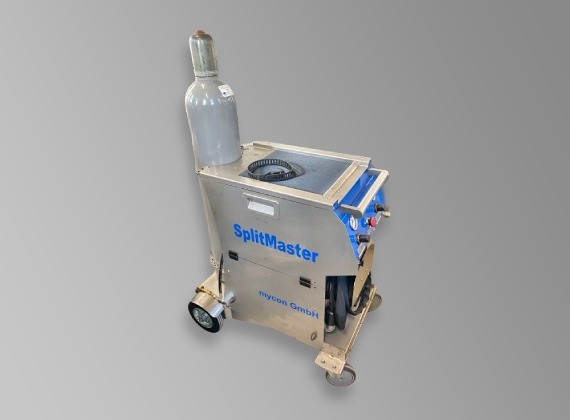
SplitMaster offers new ways to dispose of traction batteries:
- Manual deduction
- Semi-automated deduction
- Fully automated deduction
Inspecting and reviewing a vehicle battery after an accident is important to identify and minimize potential risks that may arise from damaged or defective batteries.
- Potential damage: In the event of an accident, the battery can be damaged, whether by direct collisions or by vibrations. It is important to inspect the battery to make sure there is no physical damage that could lead to leaks or other problems.
- Electrical safety: An accident can cause damage to electrical components, including the battery’s cables and connectors. A check ensures that there is no exposure to electrical components that could potentially cause short circuits or other electrical hazards.
- Potential leakage: The battery can be damaged, which can lead to leakage of electrolyte. A leak of battery acid not only poses an environmental hazard, but can also cause corrosive damage to vehicle parts.
- Thermal reactions: In some cases, thermal reactions can occur that can damage the battery and even lead to a fire. A post-accident inspection can determine if the battery has been overheated or damaged in any way, which is a potential hazard.
- The grouting of a bonded cover of a traction battery can be done in different ways, depending on the specific requirements and the resources available.
1. Mechanical methods: Mechanical methods such as tapping, scraping or cutting can be used to loosen the glued lid. However, caution is advised here to avoid damage to the battery or its components.
2. Heat treatment: The targeted application of heat can soften the adhesive, which can make it easier to remove the lid. This can be done by using heat guns, heating mats or other heat sources.
3. Chemical solvents: The use of chemical solvents can break down the adhesive and allow the removal of the glued lid. However, it is important to ensure that the solvents used do not damage the battery.
4. Cold embrittlement with subsequent mechanical jointing: By applying cold to the bonded lid, the adhesive can be embrittled at temperatures of -40 to -70° C, thereby reducing its adhesion. It is sufficient to cool only partial areas accordingly, which can then be separated with light mechanical use.
Cold joining using the mycon SplitMaster system enables the damage-free separation of bonded battery housings quickly and safely.